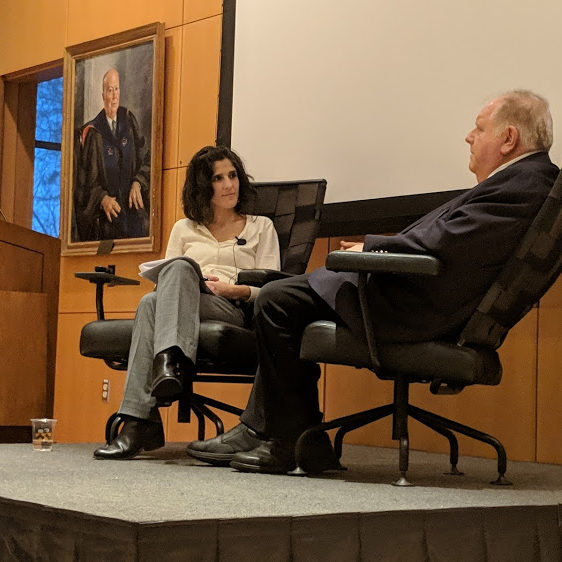When we think of academic research, we often think of libraries or labs. We might imagine flipping through books, reading articles, or running lab experiments, but there is a branch of research that looks much different than this. In fact, it looks like the real world.
This branch is field research. Researchers from various fields apply this method of research, but in this post, I’ll be focusing on field research in design. Design is a big field with a wild range of applications. Design spans from information design (think infographics, instructions, maps) all the way to User Interface design (think apps and websites), but what’s at the root of design is a need to communicate effectively with people and facilitate understanding. The goal in design is to create systems that are effective–ones that work for their users. Accordingly, when designers conduct field research, they go out in the world and record qualitative data on people’s needs and experiences: What information are they searching for? What do they want out of a product? What parts of the current product are helpful? Which are frustrating and confusing?
In this interview, Sheila Pontis, a lecturer in the Keller Center, talks about her work and encourages designers and student researchers to embrace field research and trust qualitative data.
Sheila Pontis leads courses on information design and design thinking. She also works as a designer for Sense Information Design LLC in New York. I am currently enrolled in Professor Pontis’ information design class (EGR 381), but I first got to know Professor Pontis because she is one of my advisers for my independent concentration in Human-Computer Interaction (HCI) and Design.
——————————————————-
Q: You just published a book about field research. What is field research?
[Design] field research is a form of field research where the object of the study is people. This is different from other more quantitative types of research where you are studying the thing or the interaction between the thing and other people. Field research focuses on understanding people, understanding what is important for them, what their needs are, how they interact with their environments, and what meaning they attach to different things within those interactions.
“Field research focuses on understanding people…”
Q: How does it compare to other forms of research in your field?
This form of research is coming from anthropology and the social sciences. It’s still not very common among designers, because it’s very different from other forms of research [in design] such as usability studies that designers use a lot towards the end of the process once they have something concrete they can test. Designers are used to much more quantitative kinds of research.
“Qualitative research is much more about depth than breadth.”
It’s very different. Qualitative research is much more about depth than breadth. Another reason it isn’t big in design is because analyzing the data from these types of studies is very different… Usability studies typically produce numeric data you can objectively analyze and statistics you can generalize. Field data is much more subjective because they are words and require a high level of interpretation. Some people think ‘oh that’s completely biased.’ There are different methods to remove the bias.
You are dealing with a completely different type of data. It can be extremely overwhelming. Many designers decide not to even bother.

Q: Would you say that designers are starting to include more field research? Is this a trend in the field?
Ten years ago designers were completely allergic to the word research. They thought they knew what the audience needs. Slowly research started to become commonplace and designers said, “ok let’s test this rather than just go with what I think.”
As design challenges start to become much more complex, there’s more need to work with different types of research that allow you to have a more holistic understanding of the situation earlier in the process.
Q: Do you have any advice for students who are trying to approach the idea of how to use and remove bias from qualitative data?
You just have to do it and make 500 mistakes. Try not to be so scared of having a bad interpretation. It’s just getting used to that way of thinking and getting familiar with the different components. These will help you feel more confident and feel less skeptical.
Ethnographic courses are great for this. The methods are not hard, what you need to switch is your mindset.
——————————————————-
Though we may not all be designers, I think there are two big takeaways that are valuable for us all:
> Ask WHAT/WHO IS IT FOR?
For designers, this is a big question because the goal is to facilitate understanding and create something that works for the user. But still, in any research endeavor, it can be easy to get lost in the process. Remember your mission and don’t let your instinct allow you to lose track of your goal.
Remember your mission and don’t let your instinct allow you to lose track of your goal.
> TRUST the QUALITATIVE
While being wary of bias is valid, qualitative data is too valuable for us to ignore. Sheila talks about the fear and confusion she first felt when conducting field research. I think we all can relate to this anxiety and initial distrust of more qualitative methods, yet I would encourage Princeton students to step away from their labs, close their books, and try researching in a new way. Conduct an interview or make some observations, and connect it back to the quantitative methods we know so well.
If you want to learn about these methods, Princeton offers an ethnography course in anthropology, ANT301, called The Ethnographer’s Craft.
To read more about field research and learn about design, check out Sheila Pontis’ new book, Making Sense of Field Research: A Practical Guide for Information Designers.
— Raya Ward, Natural Sciences Correspondent

